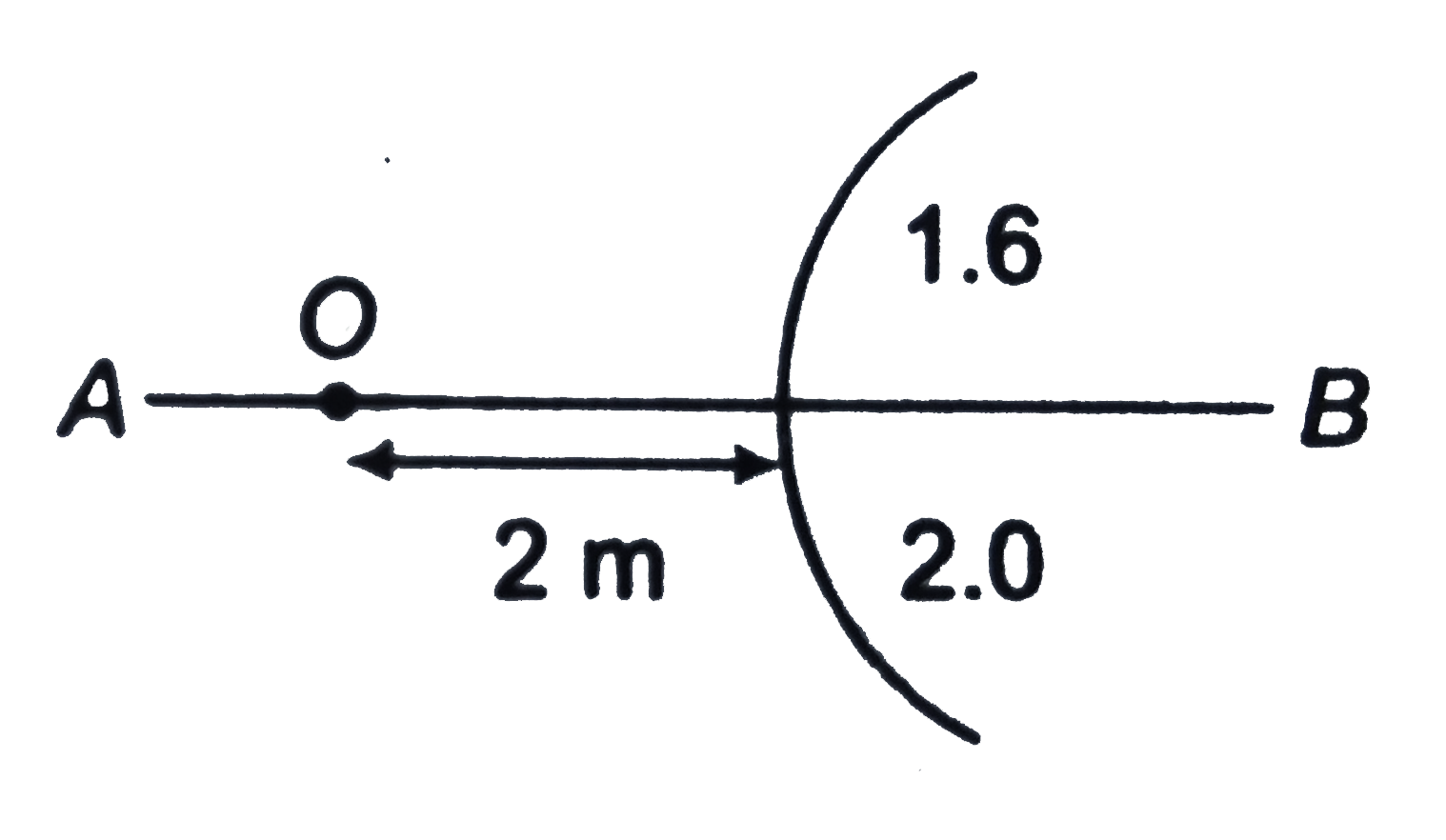Refraction at spherical surfaces
Step by step video solution for Refraction at spherical surfaces by Physics experts to help you in doubts & scoring excellent marks in Class 11 exams.
Updated on:21/07/2023Similar Questions
Knowledge Check
In the figure, a point object O is placed in air. A spherical boundry separates two media of radius of curvature 1.0m. AB is principal axis. The separation between the images formed due to refraction at spherical surface is
 A12mB20mC14mD10m
A12mB20mC14mD10mThe first factor length f1 for refraction at a spherical surface is defined as the value of u corresponding to v=∞ (as shown) with refractive indices of two mediums, as n1 and n2. The second focal length f2 is defined as value of v for u=∞.
 Af2 is equal to n2R(n2−n1)Bf1 is equal to n2R(n2−n1)Cf2 is equal to (-) n2R(n2−n1)Df1 is equal to (-) n2R(n2−n1)
Af2 is equal to n2R(n2−n1)Bf1 is equal to n2R(n2−n1)Cf2 is equal to (-) n2R(n2−n1)Df1 is equal to (-) n2R(n2−n1)A parallel narrow beam of light is incident on the surface of a transparent hemisphere of radius R and refractive index μ=1.5 as shown. The position of the image formed by refraction at the image formed by refraction at the spherical surface only as
 AR2B3RCR3D2R
AR2B3RCR3D2R
Focal Length OF Lens||Lens In Medium||Lens Ray Diagram||Discussion OF Sheet Refraction By Spherical Surface Question -42 to 47
View SolutionAn object is placed 10cm away form a glass piecwe (n=1.5) of length 20cm bounded by spherical surfaces of radii of curvaure 10cm. Find the position of final image formed after two refractions at the spherical surfaces.

View SolutionLateral Magnification For Refracting Spherical Surface
View SolutionRefraction Concept||Plane Surface Refraction||Spherical Surface Refraction||Lateral Shift OF Ray by Slab
View SolutionIn Figure, a point object O is placed in air. A spherical boundary separates two media. Ab is the principall axis. The refractive index above AB is 1.6 and below AB is 2.0. The separation between the images formed due to refraction at a the spherical surface is (assume the radius of curvature (R) to be 1 unit)

View Solution
